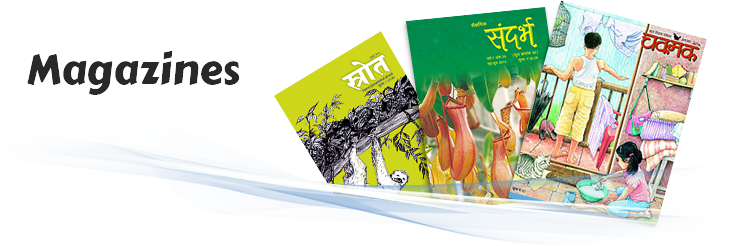EKLAVYA – AN INTRODUCTION...
Since the last three decades and more, Eklavya has been striving to translate this dream into a lived reality for all children. Working towards the goal of social change through meaningful education, it conducts researches and evolves curricular models at the micro level and attempts to implement them in the mainstream system to bring about change in the school education system in India.
Eklavya was set up in 1982 as a non-government registered society. From the onset, it took up the academic responsibilities of the landmark Hoshangabad Science Teaching Programme (HSTP), then being jointly run by the state government and two voluntary organisations, Kishore Bharati and Friends Rural Centre. Alongside, it developed and implemented the innovative Social Science Teaching Programme and the Primary Education Programme (PRASHIKA) in the government schools of Madhya Pradesh. More recently it worked with the National Council of Educational Research and Training (NCERT) in developing the National Curriculum Framework (NCF) 2005 and the syllabuses and textbooks based on the NCF.
Eklavya continues to actively seed and develop academic programmes for curricular change in elementary education, at the micro level, and mainstream them through government and non-government agencies. It has now initiated work in curricular research and material development in language and math in the primary stages and science and social sciences in the high school stages. This work of curricular critique, research and material development fuels its ongoing engagements with the State Councils of Educational Research and Training (SCERTs) of Bihar, Chhattisgarh, Rajasthan, Kerala and Andhra Pradesh in providing them academic resource support in developing curricula and textbooks in various subject areas. Teacher professional development is another area that Eklavya is engaged with through research, material development and conducting teacher capacity building workshops.

While it all began quietly and humbly In the form of a few reports and booklets that emerged out of our field work and interaction with children and teachers, it was quickly realized that publishing quality material could be a vital supplement and valuable addition on the way to the goals that we were out to pursue. We thought it to be an efficient medium to increase the reach of our philosophy and ideas way beyond the restrictions that our limited resources and activist power imposed on us. Bit by bit the caravan of books grew to include educational classics, educational modules for teachers and children, picture books, material for young readers and beginners, activity books, fiction and non-fiction, books on various social issues and so on.

We publish the following magazines:









No comments:
Post a Comment